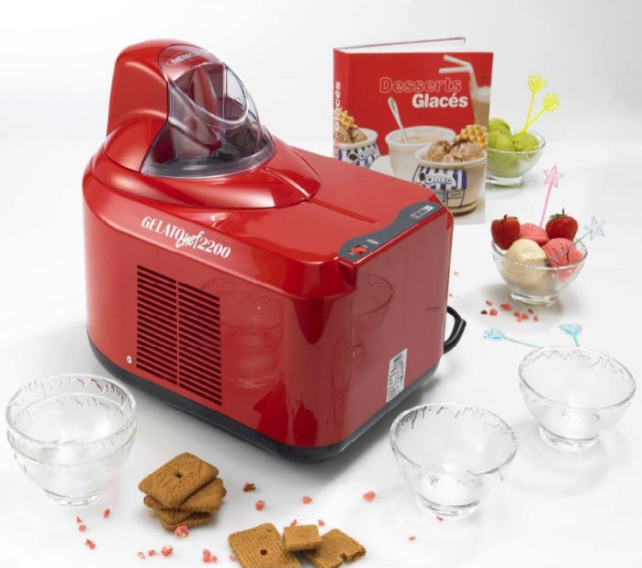
You don't have to be a serious ice cream lover to enjoy the recent trend of artisan gelato- interesting flavors and amazing textures, made from fresh ingredients. But despite wider availability, there are still limitations (we haven't seen sour ice cream, or much maple-bacon in our store freezer). And it can be a fun project to try making it at home. Plus, it doesn't have to be a difficult process either- newer machines make things pretty simple, and the one we've been testing is one of the best on the market.
Sure, ice cream makers are fairly big and bulky. And this one's instructions aren't completely clear- the recipes use "grams" for milk and cream measurements, and don't discuss different styles. But the Nemox Gelato Chef 2200 creates amazing results, and does so pretty quickly, with little downtime between batches and easy clean-up. And don't worry, despite the name, it works equally well for ice cream, sorbet, sherbet, frozen yogurt, or even granitas.
First things first. Making your own ice cream will probably cost more than buying it- especially if you try to use the best ingredients, like we did. Further, some experimentation will be necessary, and it can be difficult or impossible to tweak a batch after it's made. And you'll need to set aside some time- perhaps an hour or so from start to finish, per 1.5 quart batch.
Ice cream has a pretty long history, and though we now think of chocolate and vanilla as the defaults, some of the original flavors were actually closer to ones we consider exotic: ginger, tea, basil, mint. We aimed to create two batches, one that used raw eggs and the other that added the more traditional first step of cooking the eggs, milk, and cream together to create a custardy base. We were a bit worried about the health impacts of the raw eggs, and those with compromised immune systems probably should cook theirs, but the end results were not actually the different in terms of texture or creaminess- and the cooking steps added a lot of time and hassle. We'd suggest using raw egg yolks (and using the whites to make meringues perhaps)!
We tried one Meyer lemon batch, zesting the lemons and then juicing them. The basic setup is the same for most ice cream styles (though French and Italian varieties will adjust the milk/cream ratio a bit, and Philadelphia-style will actually do away with eggs completely, something we aim to try in the near future). Throw four egg yolks in with about 3/5 cup of regular granulated sugar and whisk them a bit. Toss in 2/3 of a cup of cream, 1/3 cup milk, and a pinch of salt into this mix, stir it well, and put it in the mixer. You should give the machine about five minutes to cool down before pouring in the ingredients, and also need to add some alcohol (anything you have lying around) in between the removable bowl and the fixed bowl- this just helps ensure proper chilling of the bowl.
You have to manually turn on the mixer, but it will automatically reverse to indicate when the ice cream is ready, and it took between 25-35 minutes for our batches to be ready. The top of the blending unit is open to the air, so you can add some mix-ins late in the process for best results (we added fried donut crumble to an apple cider ice cream batch, for instance). There aren't any lights or sound indicators, nor an approximate countdown read-out- nothing fancy. But the refrigeration unit worked like a charm, and the mixer seemed reasonably good, smooth motion, consistent, and good scraping of the edges of the internal chamber (and it's made in Italy). The unit is loud, though, and a little clunky-looking. Plus, it isn't cheap, running over $300- and we had trouble finding it widely available for sale in the United States at the moment.
But every single person who tried the results came away impressed, and this maker is definitely solid. In fact, our results beat that of just about any commercially available ice cream, even our first couple of batches. Pretty easy to clean, the Gelato Chef 2200 also uses a stainless steel bowl and only needs about ten minutes (recommended) to cool down between batches. You can serve your ice cream from the unit as well, using the base as a freezer when your frozen yogurt or sorbet is ready. All in all: worth the price for serious ice cream lovers who want to impress anyone or experiment with creating some amazing home-made desserts.
